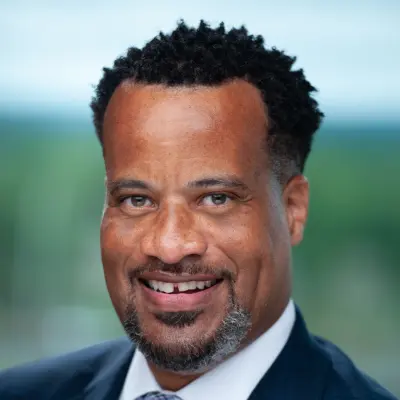Emerging lessons from a new scholarship model for long-term success
The Hartford Foundation for Public Giving shares learnings and projected results from developing a new scholarship model that funds low-income, first-generation students’ long-term success.

Higher education has long promised opportunity and mobility, but that promise is slipping away for many students, especially those from under-resourced communities. Soaring tuition and an uncertain financial aid system demand we rethink how philanthropy supports postsecondary success. At the Hartford Foundation for Public Giving, we’ve spent the past year developing a new scholarship model to meet this challenge.
Like most community foundations, we have long supported traditional scholarships—awarding nearly $30 million since 1945—and will continue to do so. But the reality is that while a $3,000 annual scholarship may alleviate some financial strain for a student, it’s no longer sufficient to advance our long-term goals of increasing graduation rates and lowering post-college debt.
Identifying shortfalls: Insufficient funds, no safety net
We took a hard look at where traditional scholarships fall short, particularly for low-income, first-generation students from under-resourced high schools. The challenges we discovered are two-fold:
First, most scholarships don’t meet the need. Nationally, undergraduates average $11,610 a year in grants—far below the actual cost of public four-year colleges: $29,910 for in-state students and $49,080 for out-of-state students, including tuition, housing, and fees. As a result, many students are forced to take on crushing debt just to stay enrolled.
Second, scholarships often lack a safety net. No mentorship. No support systems. No guidance on how to make the transition to college life, which can be overwhelming, especially for first-generation students.
These realities result in glaring disparities for low-income students. Barely one in four students from high-poverty high schools earns a college degree within six years. And while Pell Grants help millions gain access to a college education, recipients still graduate at lower rates than non-Pell students.
These challenges are echoed in our local community. In Hartford, only 14% of Black residents and 10% of Latinx residents hold a college degree, compared with 43% of white residents. These disparities reflect systemic inequities beginning long before college—disparities that often persist after enrollment.
Developing a new scholarship model: Filling the gap, wraparound support
With the aim of boosting college completion for low-income, first-generation students, we launched the Greater Futures Scholarship Fund, a $100,000 a last-dollar scholarship designed to cover the remaining costs of tuition and fees after all other financial aid has been applied.
The Foundation’s scholarship incorporates key elements of local nonprofit Hartford Promise’s Integrated College Success Model, which provides scholars with the financial resources, support services, and key relationships that lead to college success and economic mobility.
As “last dollar” implies, a key aim of the scholarship is to close the final gap in a student’s funding, ensuring their tuition, housing, and mandatory fees are fully covered. Hartford public school students with continuous enrollment from ninth grade, 93% attendance, and a 3.0 GPA or higher are eligible to receive up to $25,000 a year for four years ($20,000 from the foundation and $5,000 from Hartford Promise). Our first Class of 2025 includes more than 110 students; our goal is to reach at least 500 students annually.
What sets this new approach to scholarships apart is the full decade of wraparound support to help students not just enroll in college, but also have the tools to thrive, graduate, and build meaningful careers. These support services include academic coaching and tutoring; financial aid counseling, and emergency assistance; mental health support; career mentorship, internships, and development; and essential life skills training.
Emerging lessons: access, economics, and equity
A recent Gallup survey shows 71% of student loan borrowers have delayed major life milestones—buying a home, moving out of their parents’ homes, and having children—because of their debt. These choices ripple through local economies and workforce pipelines.
To understand the long-term stakes, we commissioned an independent analysis of the Greater Futures Scholarship. Using conservative estimates for 100 students per class over 10 years, and applying Hartford Promise’s graduation rates, the model projects: 760 graduates, including 50 master’s degrees, $1.9 billion in lifetime earnings, $151 million in local and state taxes, 9,110 additional jobs supported across industries, and graduates earning significantly more over a lifetime.
Emerging principles: scale, place, and leadership
A five-year evaluation will be conducted to further assess the outcomes of the scholarship fund, but these projections support the premises on which it was created and could guide similar efforts in other communities:
- Scale, structure, and preparation matter. Data consistently shows that wraparound supports from academic advising to mental health care improve outcomes, and adults with a diploma or degree earn considerably more than those who don’t finish high school. College and career readiness (CCR) programs also help close opportunity gaps, but we need to get more students to participate. In Hartford, only 54% of upperclass students were in CCR courses, compared with 85% or more in many suburban districts.
- Place-based strategies work. Linking eligibility to Hartford’s public schools encourages families to remain invested locally. Over time, this may lead more families to stay in Hartford for high school or even choose the district over the suburbs.
- Barriers beyond tuition persist. In a 2022 survey, young adults in Connecticut most often cited cost, child care, and the need to work as reasons for not enrolling in or completing college.
- Philanthropy can lead. Institutions don’t need to wait on policy reform to model solutions with measurable impact. Community foundations, with their local relationships, are uniquely positioned to convene partners who help students navigate difficult circumstances to higher education.
Photo credit: The Hartford Foundation for Public Giving
About the authors
